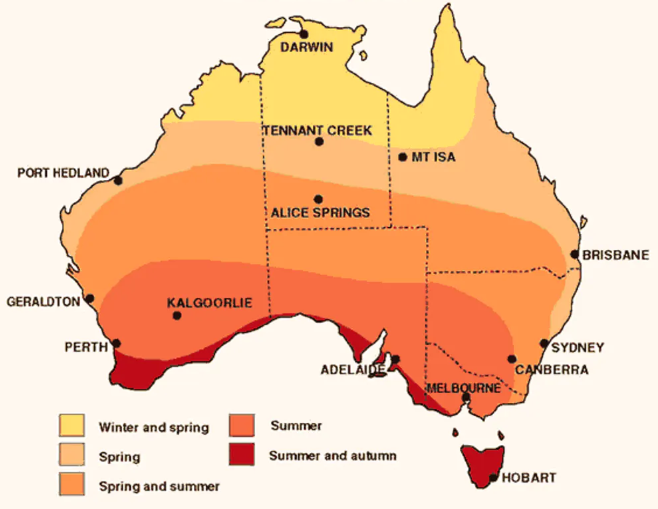The credibility of climate change to devastating bushfires incident is questioned by Australia's prime minister Scott Morrison. Signaling no change to existing climate change policies, Mr. Morrison at NSW Rural Fire Service headquarters in Sydney, said that a range of present policy measures to tackle climate change was adequate and contributing well to the reduction of GHG emissions by keeping the focus on national interests.
Reaffirming government’s commitment toward reaching emissions targets under the Paris agreement, the aim is to reduce GHG emission by 26-28% on 2005 levels by the year 2030 – signifying target decrease per capita of 50-52% and a 64-65% drop in the emissions intensity of the economy from 2005 - 2030.
As per the agreement, Australia needs to reduce the emissions by 695 million tonnes of CO2, equivalent of which around half of the reduction ~367 million tonnes of CO2 equivalent is expected to come from carryover credits from meeting earlier Kyoto target and not from practical emissions reduction.
Is the Government aim numbers enough to achieve target reduction?
Target formulated under the Paris agreement does not include later contribution of GHG emissions by the catastrophic fire incidents. The bushfire contributed around 250 million tonnes of CO2 equivalent, i.e. almost half of the country’s emission in FY18.
Traditionally, emissions from the bushfire are neutral, seeing that forest growth will offset the CO2 emission. However, present hot, dry conditions, and many burnt areas may never recover leading to non-offset of CO2 emission. Around ~6.72 million acres of land already burnt with no sign of rain until March 2020 may render the land to fire-prone, creating a vicious cycle due to more than average drier and warmer weather. Adding to that, Australia witnessed the hottest day of 40.9° Celsius on 17th December 2019 is the testimony to climate change.
In the milieu of which it is pertinent to mention that after the analysis of working paper, Climate Change Authority already revised the Federal Government GHG reduction target to 45-46% below 2015 level by 2030 commenting reduction target is not adequate to meet the Paris agreement.
Climate Change and Bushfire – An analogy
Rightly said by the Prime Minister that there was no direct connection of bushfire to the climate change. However, the indirect connection too cannot be neglected, which has resulted in prolonged duration of the fire courtesy to Australian hot, dry and prone to drought climate and increased temperature.
New South Wales government announced that in twelve months, it received only ten percent of normal water inflows, which resulted in stricter level-two water restrictions as many towns faced no water prospects. The country’s rainfall condition deteriorated and witnessed a drop of average 15% in late autumn and early winter rainfall since the 1990s causing the symptomatic effect of low soil moisture leading to dry vegetation.
Climate change possesses complex relation not only domestically but globally as well, such as cascading effect of late summer monsoon in Australia owing to delayed monsoon in India, coupled with strong wind and rise in temperature (Australian temperature has increased by 1°celcius post 20th century) resulting in long lasting draught situation making controllability of fire difficult.
On 12th November 2019, catastrophic rating i.e. highest fire danger rating is given across Greater Sydney (including the Central Coast and Blue Mountains), the Illawarra and the Greater Hunter and Shoalhaven regions. Earlier, a different region was expected to go through the bushfire season at a distinct time. However, the pattern is changing, and largescale disaster has been co-occurring simultaneously across the region, making resource sharing difficult at the time of emergency services.
Good Read: Climate Change and Bushfire – Impact on Australian Sectors and Kalkine Business
Map of bushfire seasons

Source: Bureau of Meteorology
Also, the smoke blanketed in Sydney due to the bushfire GHG emissions preceded the poor quality of air with higher rates of PM2.5 than usual average. The ultrafine particles increased by 20 times, reaching 180 µgrams/m³ than the national standard was ~8 µgrams/m³.
Fossil Fuel and Australia GHG emissions
Australia is expected to be the sixth world producer by 2030 as per the recent release of UN report. Amid 2005-2030, emissions from fossil fuel extraction are expected to increase by 95%. In the milieu of which, it is worth mentioning that not only operational i.e. scope 1 and scope 2 emissions but also a fossil fuel are the major contributor of scope 3 emissions – Australian mining sector contributes around 60% of the export market.
At the world level too, it is expected to reach annual emissions of 41Gt of CO2 equivalent, i.e. 4x the maximum amount to keep the global heating below 1.5°C.
Initiation toward GHG emissions
To help business and farmers to reduce emissions, the government has come up with the Emissions Reduction Fund (ERF) of AUD 2.5 billion spread over 15 years. The 10th auction is expected to take place on 25-26th March 2020. The total fund of AUD 2.237 billion will be available for forward contracting at this auction from Climate Solutions Fund (CSF) AUD 2 billion and remaining AUD 237 million funds from ERF. The additional CSF fund is expected to give a strong signal of continuing emissions reduction demand to the market, driving expected future drive for new project registrations and auction participation over time.
The major mining companies such as BHP Group Ltd (ASX:BHP) and Rio Tinto (ASX:RIO) to mention few moving toward ‘Steward Strategy’ initiative in FY20, bringing all stakeholders together to work toward a common goal for Scope 3 emission reduction.
Having said that Mr. Morrison too suggested keeping room for further refinement of GHG emissions reduction target before 2030.
Good Read: Call for Climate Action – A Parametric Analysis of Australian Mining Sector Initiative and Performance
Global warming provides ingredients such as high temperature, strong winds, drought and low humidity for the fire to thrive. The fast warming climate has been catalysing the bushfire to be more intense and frequent. There remains indisputable evidence linking climate change to bushfire though not directly, but indirectly too causing catastrophic impact on both social and economic environment. Interestingly, a recent survey by the Australia Institute - think tank estimated that around 81% of the people are concerned toward climate change – which will bring more droughts and flooding, while 64% want the government to set a target of net-zero emissions by 2050.
Disclaimer
This website is a service of Kalkine Media Pty. Ltd. A.C.N. 629 651 672. The website has been prepared for informational purposes only and is not intended to be used as a complete source of information on any particular company. Kalkine Media does not in any way endorse or recommend individuals, products or services that may be discussed on this site. Our publications are NOT a solicitation or recommendation to buy, sell or hold. We are neither licensed nor qualified to provide investment advice.




